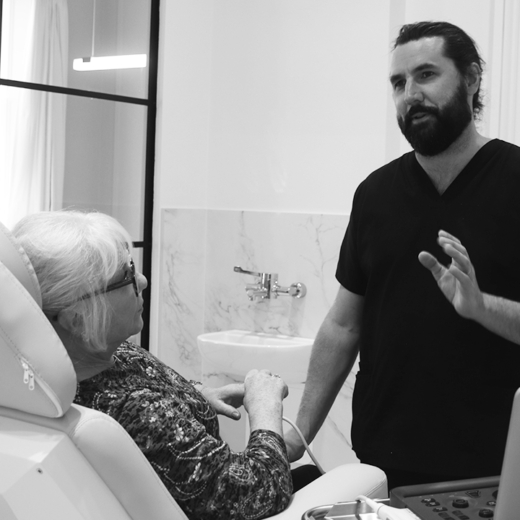McKeown Medical
202 W George St, Glasgow, G2 2PQ
Date posted — 13.08.24
Sun damage is, as the name suggests, changes to the skin due to long term exposure to the sun’s UV radiation.
And as the word ‘damage’ suggests, these are not positive changes.
These are changes to the structure and function of the skin that are initially visible in the way the skin looks and can eventually become severe enough that cancer cells start to develop.
So sun damage is a real problem, and something we should all take seriously.
If you think about the skin on a baby or a toddler and what it looks like, it’s usually quite pale, even in colour and smooth in texture.
Of course, this starts to change through the teenage years and the onset of puberty when the skin can become thicker with more sebaceous glands making the skin more oily.
But in general the skin remains relatively light in colour and smooth in texture.
The skin on the face doesn’t tend to stay that youthful dewy way for long.
By the time most people are in their 30s and 40s you can see visible changes have happened to the skin that continue to get worse into the 50s and 60s and beyond.
Almost all the changes we see to our skin as we age are the result of exposure to our environment and by far and away the biggest exposure is to the sun.
The next biggest environmental exposure is nicotine, although thankfully that is something we are seeing less and less of now.
To a much lesser extent, the changes to the skin we see are the result of environmental pollution and sugar (yes, too much sugar makes the skin look older too).
The first change that we see from sun damage is usually to the pigmentation of the skin.
The production of pigment – melanin – is the skin’s natural defence to protect our DNA from the harmful effects of the sun’s UV radiation.
This is the pigment we see when our skin looks tanned.
When we are young, most of us think a tan looks nice, which is why so many of us tan and don’t think about future consequences.
But years of over-production of melanin in our skin makes the mechanism by which we produce it become less well regulated, and so we develop patches of irregular pigmentation – often referred to as age spots, or hyperpigmentation.
The next change that you can see from chronic sun damage is to the vascular system on the face.
When the skin is exposed to the sun, blood is diverted to the skin to help defend it and restore normal function.
In the short term we see this as redness, often referred to as sunburn.
Due to chronic exposure, we eventually develop disregulated blood vessels on the face which cause patches of redness and visible dilated blood vessels, even when the acute effects of the sun have worn off.
This causes redness and thread veins.
The chronic inflammation caused by sun exposure also causes disruption to the collagen and elastin fibres in the deeper layer of the skin – the dermis – which is responsible for giving the skin its physical structure.
Healthy skin has well-organised patterns of collagen and elastin but with chronic sun exposure this becomes more hectic and chaotic.
The disruption of these structural molecules leads to changes to the texture of the skin – roughness, fine lines (rhytids) when the face moves and eventually even when the skin is at rest (static rhytids).
Over time, the elastin fibres can become so disorganised that they form visible little bumps on the skin referred to as ‘elastosis’ or ‘solar elastosis’ to indicate that it is caused by sun exposure.
Eventually the disregulation to the structure and function of the skin leads also to the formation of growths on the skin.
Sometimes these growths can be harmless, but sometimes the growths can become cancerous.
The effects of sun damage on the skin are cumulative – which means that they get worse over time.
I often hear patients tell me that they can’t have sun damage because they wear SPF every day and yet when I look at their skin they have plenty of signs of sun damage.
That’s because they may well take care of their skin now, but they didn’t when they were younger and it’s catching up with them now!

Varicose veins are enlarged, twisted veins that often appear just under the skin, primarily in the legs and feet.

When it comes to treating varicose veins, VenaSeal™ has emerged as a revolutionary option that offers a minimally invasive and...

If you're struggling with the discomfort, swelling, or unsightly appearance of varicose veins, Radiofrequency Ablation (RFA) could be the solution...
1 / 3
2 / 3
3 / 3

Varicose veins are enlarged, twisted veins that often appear just under the skin, primarily in the legs and feet.

When it comes to treating varicose veins, VenaSeal™ has emerged as a revolutionary option that offers a minimally invasive and...

If you're struggling with the discomfort, swelling, or unsightly appearance of varicose veins, Radiofrequency Ablation (RFA) could be the solution...